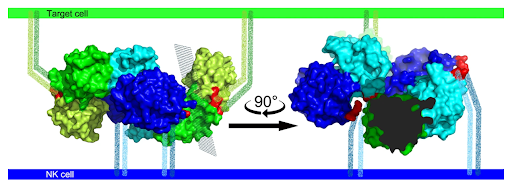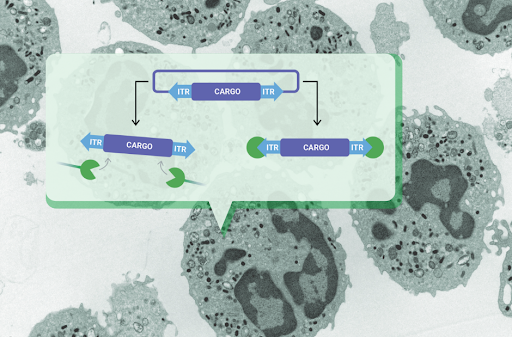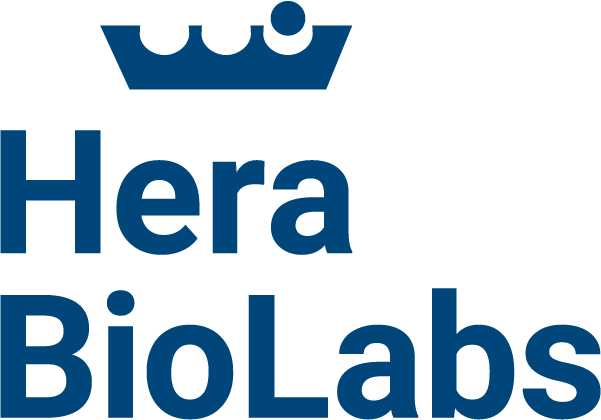The high efficiency and stability of piggyBac integration have been proven in a variety of recent studies. With a large cargo capacity of over 200kb, piggyBac surpasses many other delivery technologies, making it the optimal choice for stable cell line creation. Hundreds of peer-reviewed papers have been published as a result of the piggyBac platform.
In one published study, full-length NKR-P1 transfectants were generated using the piggyBac system. Let’s take a closer look at the critical role that piggyBac played in helping the research team build a comprehensive model of NKR-P1-LLT1 interactions to better understand how they function in immune-related diseases and cancer.
Human NKR-P1:LLT1 complex reveals clustering in the immune synapse
Innate immune lymphocytes known as natural killer (NK) cells have a variety of activating and inhibiting surface receptors, allowing them to recognize and kill malignant and infected cells. One of these is NKR-P1, which acts as an inhibitory receptor. Additionally, NK cells support the body’s adaptive immune response and even preserve a type of immunological memory, further highlighting the vital functions of these cells in immunity.
LLT1, a ligand of NKR-P1, is usually expressed on monocytes and B cells and helps maintain NK cell self-tolerance. However, it is also upregulated in many cancers, allowing those cancer cells to evade the immune system by binding to NKR-P1, which inhibits the NK cells.

Figure 1: Depiction of the hypothetical arrangement of NKR-P1 dimers (cyan and blue) interacting with LLT1 dimers (green and yellow). Bláha et al., 2022.
LLT1 ligation induces NKR-P1 receptor clustering
In this study, full-length NKR-P1 transfectants were generated using the piggyBac system, and induced to express the receptor in a limited density to allow single-molecule localization microscopy. Unlike other gene editing platforms, piggyBac allows you to integrate large or small transgenes seamlessly. Demonstrated to work efficiently beyond 250kb+ in size, Hera regularly creates vectors between 10kb and 25 kb including multi-component ion channels and GPCRs in a single construct.
Super-resolution dSTORM microscopy shines with piggyBac
For the single-molecule localization microscopy, full-length NKR-P1 stable transfectants were generated in HEK293S GnTI– cell line using the piggyBac transposon-based system with doxycycline-inducible protein expression. It’s important to note that long-term stability is essential for producing consistent and reproducible results like this, and the piggyBac transposon genomic integrations are extremely stable for months of continuous culture and >50 passages.

Figure 2: piggyBac’s high carrying capacity allowed for the creation of full-length NKR-P1 stable transfectants in the HEK293S GnTI– cell line.
Successful Results using piggyBac Technology
The research team’s findings clarify the mode of signal transduction of the human NKR-P1 receptor within the NK cell immune synapse and how this receptor overcomes its low affinity for LLT1 by ligand binding-induced cross-linking and clustering, serving as a useful model for the future description of related homologous low-affinity complexes. By observing the clusters using SEC-SAXS analysis, dSTORM super-resolution microscopy, and freshly isolated NK cells, with the help of piggyBac technology, the team concluded that only the ligation of both LLT1 binding interfaces leads to effective NKR-P1 inhibitory signaling.
piggyBac Patented Technology for your Industry
The piggyBac Transposase/Transposon DNA Delivery System is a non-viral gene editing platform designed for stable integration and expression across a variety of industries and research. Hera BioLabs is the exclusive licensee and sublicensor of this patented technology for drug discovery and early development research including creating custom cell lines for R&D, therapeutic bioprocessing, animal model embryo engineering, and more.
Reach out to us to learn more about the piggyBac technology, the services we offer, and available licenses for your industry.
References
Bláha, J., Skálová, T., Kalousková, B. et al. Structure of the human NK cell NKR-P1:LLT1 receptor:ligand complex reveals clustering in the immune synapse. Nat Commun 13, 5022 (2022). https://doi.org/10.1038/s41467-022-32577-6
